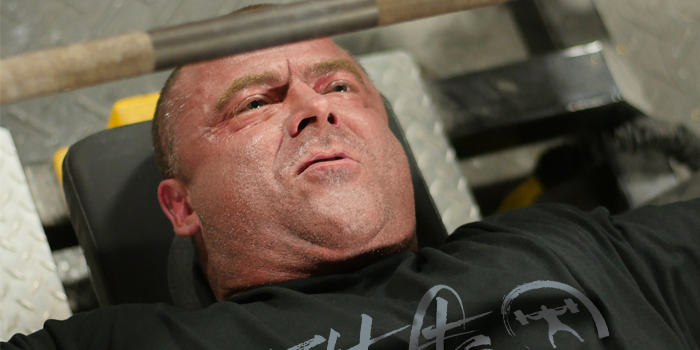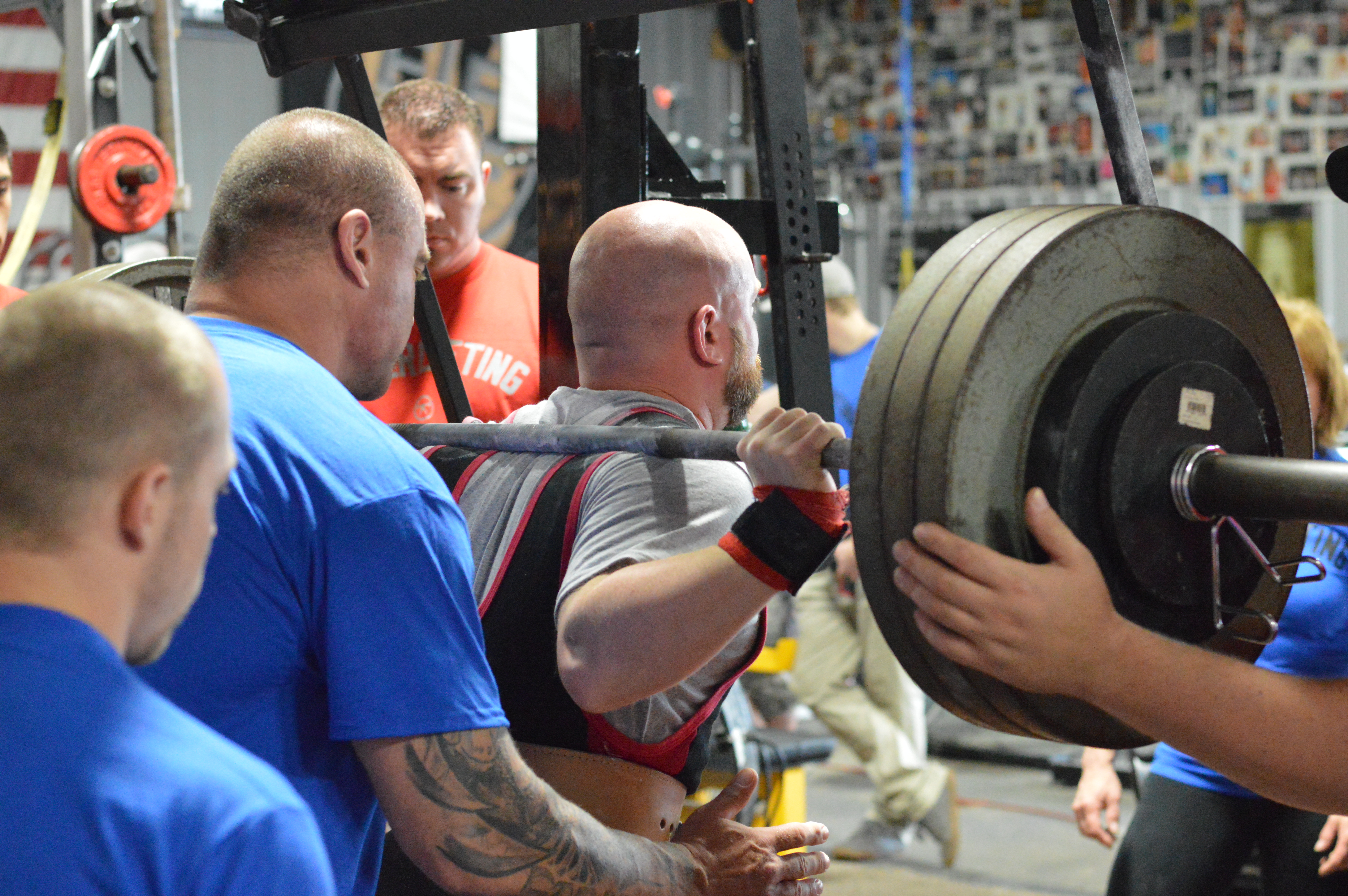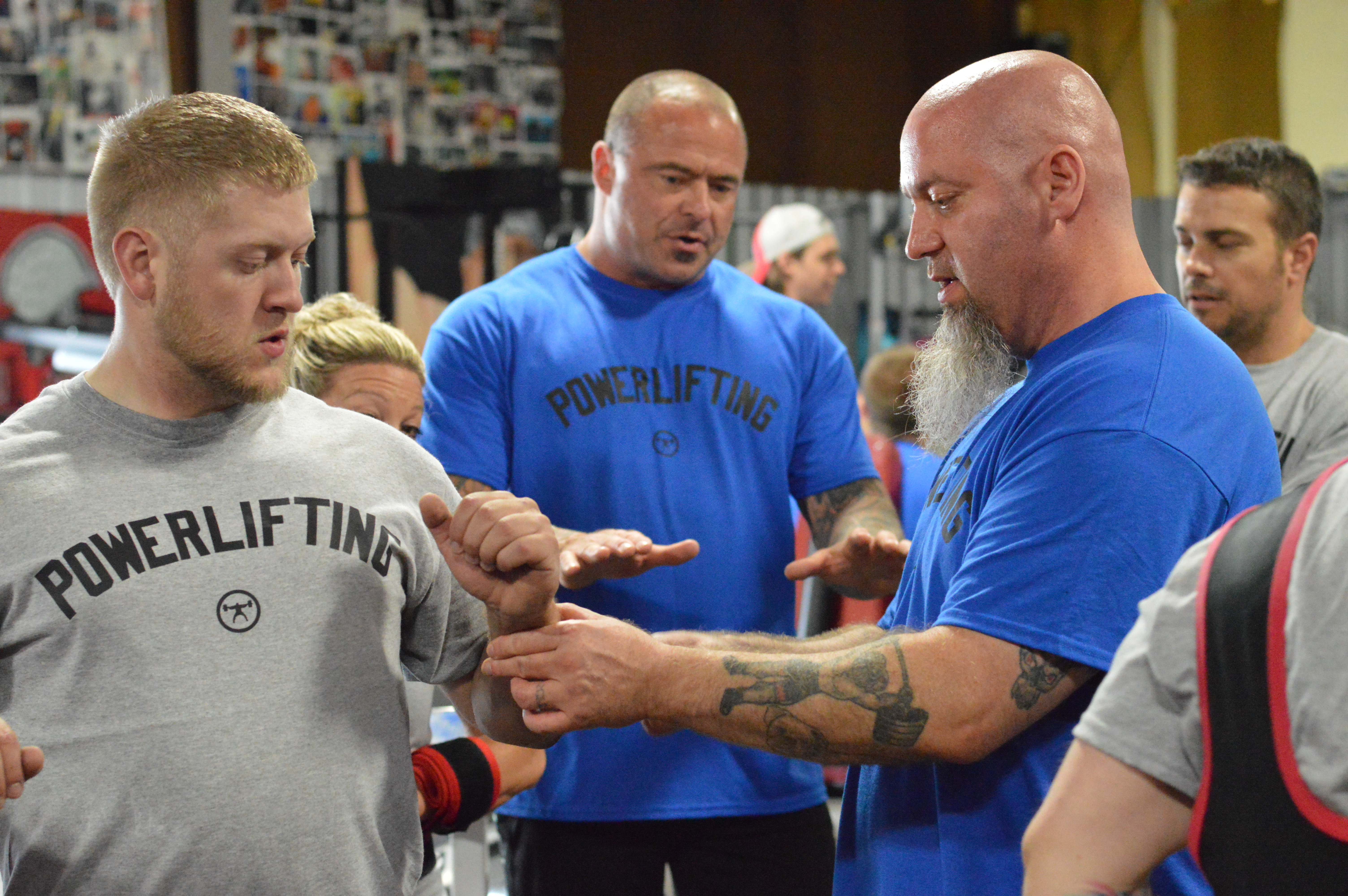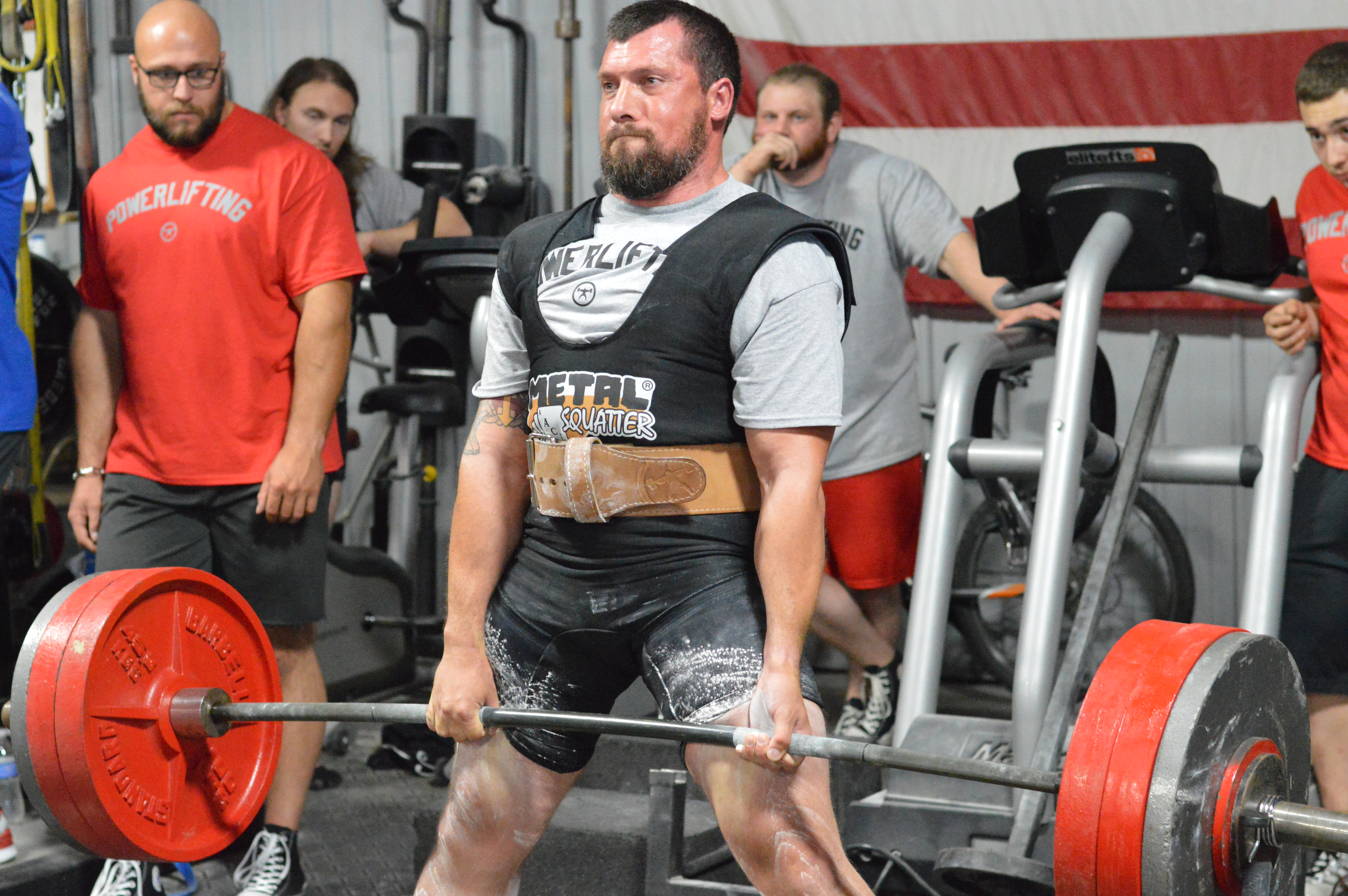
At some point in our lifting careers, we were all beginners. Anyone who has been lifting for a long period of time knows that it takes a lot of work, consistent training and a few competitions to gather some experience and progress from meet to meet to reach our lifting goals. We’ve all made mistakes in the past. That’s what helps us understand and learn what we can change moving forward, whether it’s working on grooving our technique, learning about our own weaknesses or preparing for a meet.
Everyone is different, and there are many variables for each individual lifter as far as training, recovery, nutrition and meet preparation. That being said, there are many simple fixes that can be implemented right away with a little guidance and advice from seasoned lifters who can help somebody just starting out in powerlifting.
Recently, I attended a professional raw competition in Toronto to visit some friends and watch some lifting. I think it's fantastic how many new lifters show up at meets and lift for their first or second time. Powerlifting definitely seems to becoming more popular. Every meet I’ve been to recently seems to be at capacity or very close to it.
Watching new lifters, I see so many simple mistakes being made, and many can be remedied with just a little advice. Some of the mistakes that I see people make when squatting are:
- Setting up with the bar not centered on the back
- Taking an uneven grip on the bar
- Taking too many steps to set the feet prior to squatting after the unrack
- Rushing the setup and squatting before being properly set up
- Not lining up the feet properly
- Taking an opener that’s too heavy
- Squatting with the head down
- Letting air out during the squat
- Allowing the knees to move forward and track inside
- Not allowing the weight to settle on the back before squatting
These are simple things to fix, and if you take some time and address these small issues, you will definitely lift more weight. Let’s start by fixing everything with the setup.
When you approach the bar, you should make sure that you grab the bar in the same spot with both hands. There are indicator rings on the bar, so if you grab the bar with your right hand with your index finger on the indicator ring, make sure that you grab the left side of the bar with your left index finger on the left indicator ring. This way the weight will be evenly distributed.
RECENT: Finding Peak Performance in Powerlifting Through Personal Coaching
Press your chest up to the bar in the center of the bar and try to place your back directly in the center. If you don’t have a handler to assist your setup, ask the rear spotter to make sure that you're centered. Get your feet set where you want them (if you're in a monolift). If you're walking the weight out, make sure you squeeze your shoulder blades together, pull your lats tight by pulling the bar into your back and brace your abs before you unrack the weight. It’s extremely important to keep your torso as tight as possible for the entire lift. If you’re walking the weight out, try to move one foot back and then the other to set your feet. (You don’t want to take several steps and move your feet more than necessary. Save your energy for your squat. Don’t use it up wiggling around too much prior to squatting.)
Once you're set, keep your back and lats tight and your abs braced. Take a big breath of air into your diaphragm and push your belly against your belt. Push your hips back and open your knees. Keep pushing your knees out (think of twisting the floor with your feet) throughout the descent and ascent. Don’t let your knees get too far forward or collapse toward each other. Keep your head in a neutral position. If you look down during the squat, you will have a tendency to fall forward in the bottom, losing your tightness. Lock out your squat and wait for the rack command. Rack the bar. Make sure that you take your time and set up properly. There isn't any reason to rush the squat. If you feel like your setup isn’t right, re-rack the bar and set up again until it feels right.
Benching is the lift that seems to give people the most trouble. It’s rare to watch a flight of benchers and actually pick out a lifter who is doing everything right. Some of the mistakes that I see in benching are:
- Setting up flat on the bench
- Not setting the back or lats
- Not keeping the wrists under the bar
- Not controlling the bar on the descent
- Taking an opener that’s too heavy
- Letting air out during the lift
- Heaving the bar off the chest
- Collapsing or going soft at the bottom of the lift
- Keeping the head up on the descent
- Not driving with the feet
- Not waiting for the judge's commands
- Pushing the bar straight up or toward the feet
It takes quite a while to figure out your best setup on the bench with your foot position to optimize leg drive. Once you get your setup, you should be practicing every time you bench, whether you're warming up with 95 pounds or going for a max lift. Consistency is the key. You want to make sure that you set up on the bench the exact same way every time.
When you set up on the bench, you want to make sure that you drive your traps into the bench. Set up with your eyes at the bar or slightly above the bar. When you set your traps into the bench, push with your feet to drive your traps hard into the bench and try to get as much arch as you can. The bigger arch that you can create on your bench, the less range of motion for your bench stroke.
Make sure that you grab the bar evenly with both hands. If you have your right pinky on the indicator ring, ensure that your left pinky is on the left indicator ring. Keep your wrists under the bar; don’t allow them to break. Keep them directly lined up under the bar. Make sure both feet are set and push against your traps. Flex your hamstrings and glutes so that your butt is just touching the bench. Pull your shoulders together as hard as you can and keep them tight. Pull your lats tight and keep them tight. Everything should stay tight for the entire lift. If your back, shoulders and lats cramp up, you're doing everything right!
Squeeze the bar as hard as you can prior to the unrack. This will engage and tighten your forearm and lat muscles. Keep squeezing the bar as hard as you can for the entire lift. Have somebody give you a lift off and set the bar in the starting position. Lock out the bar until you get the “bench” or “start” command and bring the bar down under control to touch your chest. If the bar is bobbling or teetering when you touch, the judge will wait for a press call until it’s still. When you get the “press” call, drive with your legs and press the bar up and slightly toward your face. This will help open up your elbows for a good lockout. Try and stay as tight as possible during the lift. Keep your shoulders pulled together, your lats tight, and your hamstrings and glutes engaged. Lock out the bar and wait for the judge to call a “rack” command. I’ve seen too many good lifts lost because the bar is thrown back into the rack before the judge gives the command.
Deadlifting seems pretty simple, doesn’t it? Pull the bar from the floor and lock it out. Some of the mistakes I see when people deadlift are:
- Not setting the back and lats prior to pulling
- Pulling the bar when it’s too far away from the shins
- Using a grip that’s too wide
- Jerking the bar at the beginning of the lift
- Pulling with the head looking down
- Losing air during the lift
- Taking an opener that’s too heavy
- Hitching the pull
Whether you pull sumo or conventional using an overhand or alternating grip, there are a few tips that relate to both lifts. Set up to the bar the same way every time you pull, with your shins resting as close to the bar as you can get. You want to keep the bar as close to the center of gravity during your pull as you can, which means keeping the bar as close to you as you can. If the bar starts off away from your shins, you have to use a ton of energy to pull the bar, which will seem much heavier the further away from your center of gravity.
WATCH: Deadlift Tips on Tightness, Speed Pulls, and Hook Grip
Take your grip on the bar, whether double overhand or alternating, and squeeze the bar as hard as you can during the entire lift. Drop your hips down into a starting position, pull your shoulder blades together hard and tighten your lats. Sit back and try to get your shoulders over top of the bar or slightly behind. Take a big breath of air into your diaphragm, press your belly against your belt and hold it for the entire lift. Keep your head in a neutral position or slightly looking up and start the lift with your legs, keeping your back in a neutral position. Take the slack out of the bar, feel the tension in your arms before you pull, and once everything feels tight, pull.
One of the biggest mistakes that I see is when people start the lift and the bar doesn’t move. Their butt comes up, and they have to pull the weight with their back instead of with their powerful leg muscles. This is usually the reason why people hurt their backs when deadlifting. When your legs are almost locked out, hinge at your hips and lock out the weight. Hold the lockout position until the judge gives you the signal to lower the bar.
You’ll notice there are many similar tips that apply to each lift:
- Ensure your setup is sound
- Pull your shoulders together tightly
- Keep your lats tight
- Squeeze the bar tight
- Breathe into your diaphragm and push against your belt
- Stay tight for the entire lift
- Keep your air for the entire lift
I can’t emphasize the importance of staying tight throughout all your lifts. When you lose your tightness during any lift, it’s like letting the air out of a balloon. You lose all your ability to optimize your strength and power. Most lifters notice a big increase in their lifts just by staying tight for the entire lift.
The more you train, progress and compete, the better you'll become! I suggest that if you’re competing, have a friend or fellow training partner attend the meet with you as your “handler” to keep you in the proper frame of mind, offer you cues that will help you with each lift, and keep you in a positive frame of mind. When things don’t go as planned at a meet, it isn't uncommon for competitors to become unraveled and lose their focus, which, in turn, hampers your results. If you're approaching a meet, I also highly recommend practicing your lifts and having somebody give you commands the same way you would expect at a meet. This will help dial in your awareness level for meet day and there shouldn’t be any surprises.
Keep training, keep competing and keep progressing!













